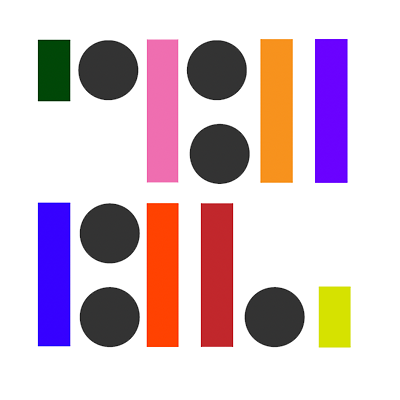aarón montoya-moraga on randomness
Aarón Montoya-Moraga is an artist, electrical engineer, and educator who specializes in writing software for audiovisual interactive installations and real-time live performances. He is leading our January 2019 online workshop, Randomness Is All Around: An Online Multimedia Arts Class.
We asked Aaron about how randomness manifests itself, the parameters of our contemporary relationship to it, and how randomness isn’t always what it seems.
“I create software for audiovisual installations. I also perform live sets dealing with both sound and visuals. I use random artefacts in my practice in order to introduce both a warmer feeling to my digital art and to also create happy accidents and introduce variability and imperfections to my live practice, so that my art keeps me engaged and responsive. The audience gets to experience a dialogue between my performance and the algorithms and software I write which are governed by chance and randomness.
I love the fleetingness and uniqueness of experiencing an audiovisual piece governed by chance and randomness, every iteration becomes cherished and unexpected.
Randomness can be seen as trivial but it’s not. There are nuances and parameters you can choose, it’s not just strict mayhem and chaos. Take noise for example. Noise is random, but you have different flavours such as white noise, pink noise, brown noise, and Perlin noise. They all have different probability distributions and ways of being implemented, and are useful for simulating different natural phenomena, such as rain drops and the movement of flocks of birds.
I think one of the most under-appreciated aspects of working with randomness and multimedia art is that even though we value and cherish our computers and digital machines, because they are cool and can crunch numbers and calculations, they are not able to create random numbers.
A simple act such as flipping a coin or rolling a die is something a computer can only fake, but can’t be as random as reality.
Randomness is often overlooked as problematic. It turns out randomness is not trivial; computers are amazing at crunching numbers, but they can’t really output true random numbers, — only pseudo-random numbers. This makes computers very detached from our analog experience of the physical world, which is full of randomness and noise.
We are immersed in a world where we are exposed to textures and noises which have random components and thus make them feel warm. It is the absence of randomness and noise which makes our digital experience so cold and sterile. If we can understand how randomness works and incorporate it to our digital practice, we can make our digital artistic output warmer and closer to the physical world.
Randomness and noise are part of the analog physical world, so introducing digital randomness is a way of bridging the gap between digital technology and the physical world. In terms of generative art, randomness and chance are ways of dissolving one’s ego or ownership of the art piece, the author becoming the creator of a system and the artwork being the result of the interplay between humans and technology.
Randomness is about letting go, it is about modelling and capturing the way rain works, the way a needle scratches vinyl, the way we walk, and how a grass field works.
When we introduce randomness into our art practice, we can iterate and explore more possibilities for our art, by trying out aleatoric sequences we can make more compelling dynamic art, where there is movement governed by chance, and we can also tame the randomness, and not make something totally chaotic, but playful and with variation governed by tiny doses of chance.
Randomness is used for making digital art have a more organic flavour, since noise and imperfections are both an integral part of our physical reality and of our capture of it.
All the sensors we use to capture reality, cameras, thermometers, microphones, no matter if they are analog or digital, are subject to noise when measuring.
It is important that we understand how to both fight against and embrace noise and randomness for our analog and digital practice, so we can create beautiful representations and take nice measurements of our physical reality, without being sabotaged by noise and randomness.”
Randomness Is All Around: An Online Multimedia Arts Class takes place online, Mondays, Jan. 14, 2019 - Feb. 4, 2019 7pm-10pm, CEST.

